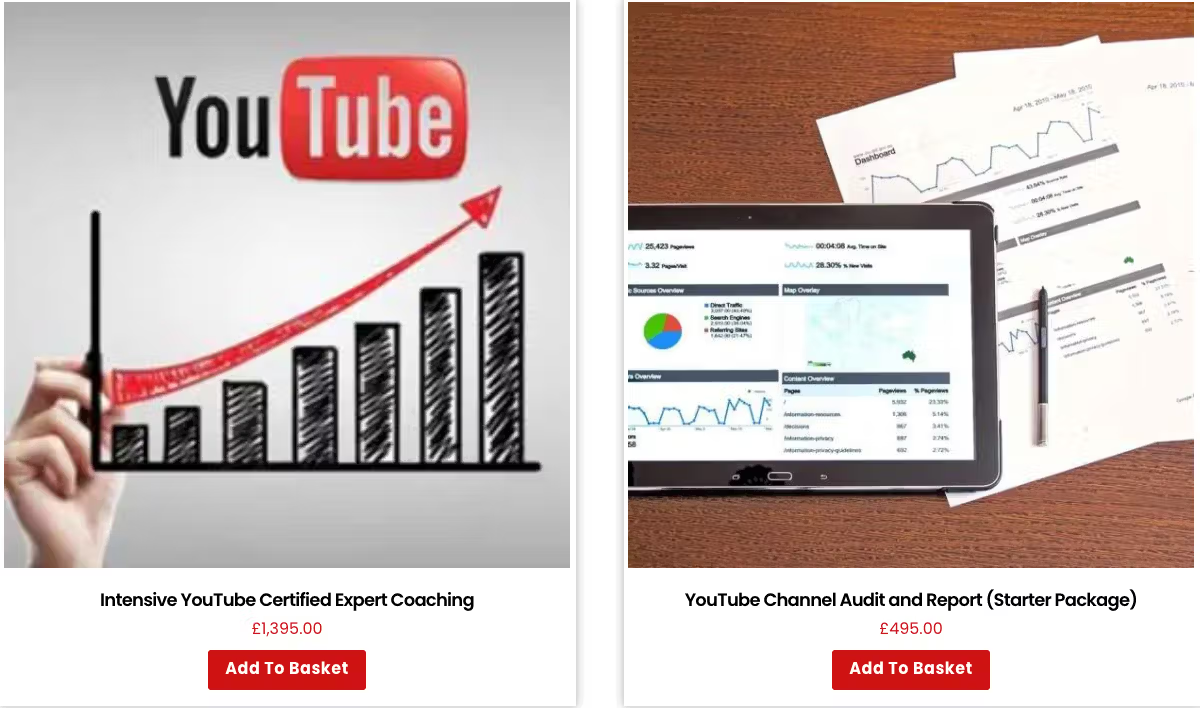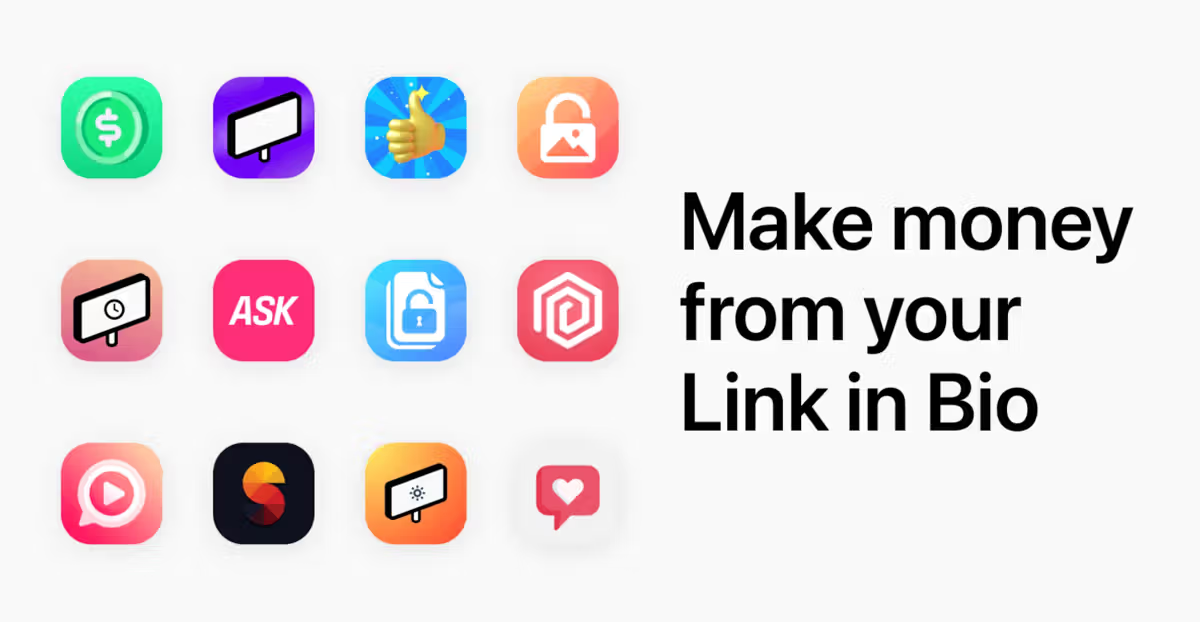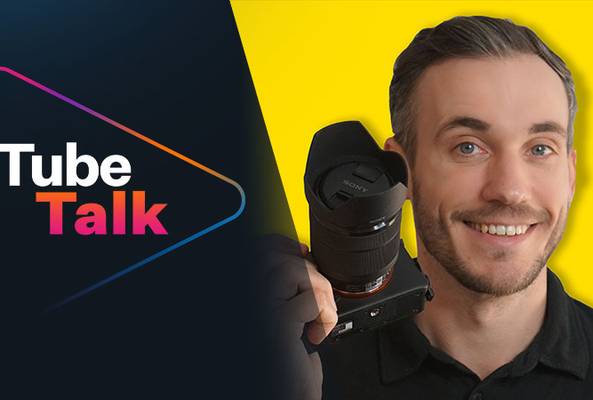Lydia Sweatt is a writer, bookworm, and bass guitar enthusiast. When she goes outside, a bicycle goes with her.
7 Lucrative Ways to Make Money Beyond YouTube

JUMP TO SECTION:
- 1. Make Money with Affiliate Marketing
- 2. Start a Blog Based on Your YouTube Nice
- 3. Get Multiple Brand Sponsorships
- 4. Start a Podcast Based on Your YouTube Niche
- 5. Create a Coaching Program
- 6. Sell Courses
- 7. Monetize Your Social Media Audience
Making money outside of YouTube seems frustratingly hard. You might ask yourself, "What can I offer to viewers besides long-form videos? How do I know subscribers will buy a product or service I've developed just for them?"
No matter the answer, one thing is for sure: No one should depend on YouTube AdSense to make a living.
Read More: 4 Tips to Make Money Outside of YouTube Like Roberto Blake
Alan Spicer, YouTube educator and social media maven, says the advertising industry is just too risky. Few creators who join the YouTube Partner Program and monetize their videos are successful without a back-up plan.

“Yes, 1,000 subscribers and 4,000 hours of Watch Time does get you monetized on the platform,” Spicer says. “That won’t necessarily pay your bills. If you’re MrBeast, great. If you’re the returning Shane Dawson, fine. Maybe. But to the average YouTuber, it’s pocket change.”
In this episode of TubeTalk, Spicer shares a multitude of ways to make money on YouTube. We’ve written many posts about that subject, so today, we’ll focus on the other side: ideas to make money outside of YouTube.
Ready to make more money than ever? Here are seven ways to supplement your YouTube revenue.
1. Make Money with Affiliate Marketing
Have you seen YouTube creators promoting affiliate links? To most people, that looks like a random list of web addresses below a video. But there's a lucrative purpose for doing this, as affiliates earn thousands of dollars a year from product promotions.
Alan sprinkles these links into the description section of YouTube videos. You'll see a few of them in the image below, which includes links to try Skillshare, vidIQ, and Rev.

So how do you make money with affiliate marketing? Here's how it works:
- Join an affiliate program, such as the one offered by Amazon. Or go directly to a brand or company and ask to become an affiliate.
- Receive an affiliate link/discount code to share with your YouTube audience. These links will send viewers to products they can purchase.
- Get a small commission when viewers use your link/code to make purchases.
The type of products you'll promote depends on your YouTube niche. If you’re a gardener, promoting something your audience finds useful, such as shovels and potting mix, can help you earn money. If your channel is all about dogs, viewers might be willing to buy leashes or dog food. Simply ask yourself, “What does my audience spend money on?”
2. Start a Blog Based on Your YouTube Nice
With a blog, you can make money using many of the same revenue streams available on YouTube. Placing ads on your blog and earning a commission through affiliate links are two of the most common.
If you’re wondering how much all of this costs, here’s the good news: Not much! Typically, creating a basic blog is affordable.
“You can start a blog very easily and very cheaply, and in some cases for free if you go to places like Wordpress.com,” Spicer says. “You can buy a domain for as little as $5-$10 a year, maybe even less.”

Want to save time while blogging? Make sure every post is in alignment with your YouTube niche. That way, you can repurpose content and spend less time writing from scratch.
Here’s the step-by-step breakdown:
- Upload a video to YouTube.
- Transcribe the video using a service like Rev.
- Use the transcription to create a post of up to 2,000 words.
- Embed the original video in your blog post (for search engine optimization).
- Add affiliate links to the blog post (to generate revenue).
You can turn 100 YouTube videos into 100 blog posts. For every page you publish, website ads and affiliate links will add extra cash to your bank account.
3. Get Multiple Brand Sponsorships
Every creator on YouTube wants a brand sponsorship. But guess what? YouTube isn't the only place to make these deals happen.
Brands will pay you to advertise their services on:
- TikTok
- Snapchat
- And so many other platforms
These “advertisements” are usually sponsored videos or image posts. You can negotiate a deal to make three or four videos a month, where you weave a brand “segment” into your content. Or, you can simply post a brand-approved image on Instagram. It truly depends on the terms you negotiate with the company.
Read More: The Truth About Getting a Brand Deal on YouTube
Like affiliate marketing, anything you promote for a brand should align with your niche and viewers' interests.
4. Start a Podcast Based on Your YouTube Niche
Is your niche so complex that videos don’t do it justice? Consider starting a podcast. You can share all those extra details and side stories that won’t fit inside a 10-minute video. And, of course, there are money-making opportunities.

With a podcast, you can monetize episodes via:
- Sponsored ads
- Bonus content and live streams
- Uncut versions of your episodes
- Private communities on Discord, Slack, and Patreon
- Memberships that unlock visual episodes (not just audio)
Read More: Podcasting on YouTube - 7 Tips to Get Subscribers on a Paid Membership
Best of all, filming each episode creates more video content to post on YouTube.
5. Create a Coaching Program
YouTube tutorials are just the tip of the iceberg when it comes to teaching. A coaching program allows you to teach subscribers new skills in various formats, such as audio calls, video conferences, written reports, and more.
Good Energi, a travel vlogger, teaches her subscribers how to become digital nomads. She vlogs from places like Chiapas, Mexico, and Geneva, Switzerland, while explaining how she makes money online. Additionally, viewers can book her to discuss foreign travel, YouTube growth, and working abroad.

Her basic rate is $125 per hour, but you can charge whatever you believe is fair. Thinking in terms of time, expertise, and value will help you set a reasonable price.
Spicer does something similar for rising YouTube creators. He makes money selling various YouTube channel audit packages, which include video chats and written reports.

6. Sell Courses
You’re going to love this idea, mainly because you’re already doing it to some degree. Just think: How many tutorials have you posted on YouTube around a specific topic? Putting all of these videos together creates the foundation for an online course.
Creating a popular course has many benefits:
- It’s a digital product, which means you can sell an infinite number of courses.
- Selling a $20 course provides an extra $200/month if just 10 people buy.
- A course will boost your credibility and help you turn your channel into a business.
Read More: 3 Ways to Grow Your YouTube Business
Courses are valuable, but they aren't the only digital products you can sell. Spicer has YouTube thumbnail templates for £9 on his website.
You might not sell something like that, but you can create something else – an ebook or another digital product – to be downloaded multiple times.
7. Monetize Your Social Media Audience
By now, everyone on social media understands the “link in bio” concept. It's a sacred part of your profile that houses anything important, such as a link to your website or booking page.
But what if, instead, this area housed a digital tip jar? Fans could send you $5, $10, or $15 because they believe in you and your content.
In that case, you would need something like Koji, a service for customizing (and monetizing) your bio links. Koji offers different activity apps for your followers, such as Ask Me Anything, Branded Quiz, Dare Me, Shout Outs, and Tip Jar – all of which are pay-to-play services for your audience.

To make money beyond YouTube, you have to produce content that meshes with different platforms. If you’re going to monetize on Instagram, Twitter, Patreon and beyond, you need to understand how people interact in those spaces. Then determine what you can do to enhance their experience in both paid and non-paid ways.
“You meet the audience where they are,” Spicer says. “You don’t push them to one homogenized mess. You cater and tailor your media to them, not manipulate them into your media.”


